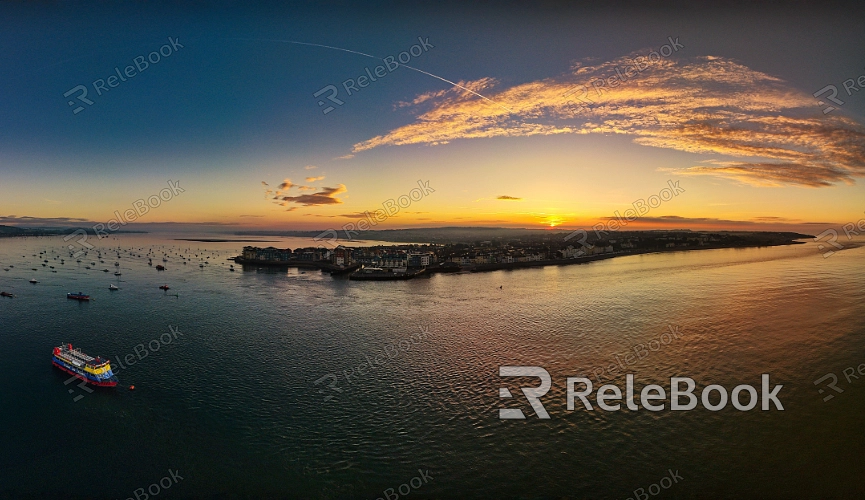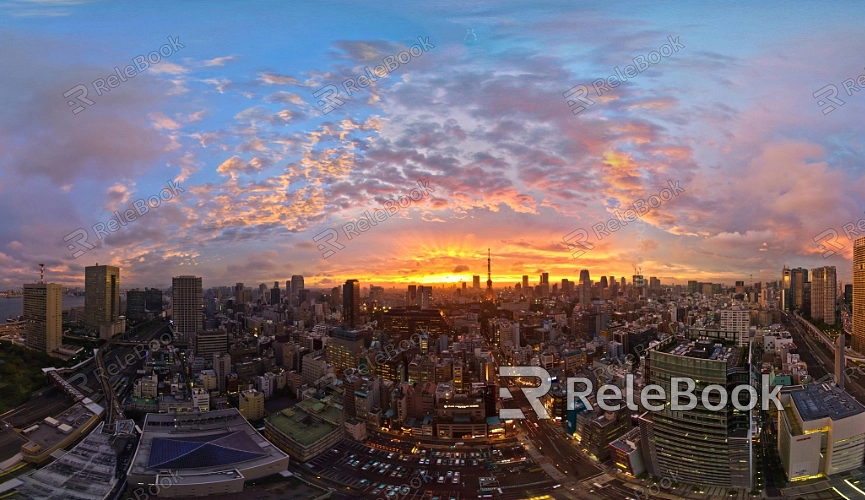What Are the Best HDR Sky Textures for Outdoor Lighting in 3D Rendering
In architectural visualization, landscape design, and environmental creation for games and animations, HDR images play a key role in delivering realistic lighting. However, with so many HDR texture options available, it can be difficult to determine which HDR sky is best suited for a specific rendering scenario. This challenge often arises in popular 3D software like 3ds Max, Blender, and Cinema 4D. This article will guide you through the most commonly used HDR sky textures for outdoor rendering and how to choose the right one based on your project needs.

1.The Core Function of HDR Skies
HDR sky textures primarily serve to provide realistic lighting and environmental effects. Unlike LDR (low dynamic range) images, which struggle to capture both light and dark details, HDR images offer a broader range of brightness, which is particularly vital in outdoor lighting.
Lighting Consistency: HDR skies can deliver consistent lighting across a scene, helping to avoid overly bright or dark areas. This is especially important in projects like architectural visualization, where accurate light and shadow presentation is critical.
Dynamic Sky Changes: Some HDR skies capture different times of day, such as early morning, midday, and dusk. This feature allows you to simulate natural lighting changes throughout the day in your renders.
2.Choosing HDR Textures Based on Scene Type
Not all HDR sky textures are suitable for every outdoor scene. The type of scene you're rendering dictates which HDR texture to choose.
Clear Skies vs. Cloudy Skies: For bright, sunny environments, HDR textures with clear skies and strong sunlight are ideal. If you're aiming for a more atmospheric, moody scene, opt for HDR images with clouds, which can offer softer lighting.
Day and Night Cycles: If you're rendering a project that spans different times of day or involves day-night transitions, HDR textures that capture sunrise, sunset, and even starry night skies will be valuable. These textures help create dynamic lighting shifts in your scene as time progresses.
3.The Impact of Resolution
The resolution of an HDR image can significantly affect the final rendering quality. Low-resolution HDR skies may result in uneven lighting or noise, compromising the visual outcome.
Low vs. High Resolution: While lower-resolution HDR skies can speed up rendering times, they might lack lighting detail. High-resolution HDR textures, on the other hand, preserve finer lighting and detail, making them a better choice for high-quality renderings.
Recommended Resolution: For most outdoor rendering projects, using an HDR image with at least 4000x2000 pixels ensures good quality. For more detailed scene designs, resolutions of 8000x4000 or higher are recommended.

4.Using HDR Skies in Different Software
Various 3D design programs support HDR skies differently, so it's essential to choose the right resources and techniques for each platform.
3ds Max: Both V-Ray and Corona Renderer in 3ds Max offer robust HDR lighting support. Designers can fine-tune HDR exposure settings and combine HDR with other light sources to achieve ideal outdoor lighting effects.
Blender: Blender’s Eevee and Cycles engines support HDR sky lighting. Cycles is especially suited for projects requiring global illumination, while Eevee excels in real-time rendering tasks.
Cinema 4D: In Cinema 4D, HDR sky textures work well with global illumination to simulate realistic light bounces, which is particularly useful for large outdoor scenes.
5.Tone Mapping and Exposure Adjustments
Simply loading an HDR sky texture doesn’t guarantee the perfect result right away. Adjustments to tone mapping and exposure are key to optimizing the lighting.
Tone Mapping: By adjusting the brightness and contrast of an HDR image, tone mapping helps prevent overexposure or overly dark areas in a render.
Exposure Control: Different rendering engines, such as V-Ray, Corona, or Cycles, offer exposure control. Designers can manually tweak exposure levels to ensure smooth transitions in lighting across the scene.
6.Resource Management and Optimization
Large HDR images can consume significant system resources, which may affect rendering efficiency. Optimizing resource use while maintaining quality is a critical consideration.
Optimizing Texture Size: For larger scenes, reducing the resolution of HDR images can help minimize memory usage and improve rendering speed without sacrificing too much quality.
Using Proxy Objects: Some rendering engines allow HDR images to be loaded as proxy objects, which reduces memory demands and streamlines the workflow.
7.Free vs. Paid HDR Resources There is an abundance of HDR sky textures available, both free and paid, each with varying levels of quality. If you're finding it difficult or time-consuming to locate high-quality HDR textures, or you're unsure where to start, consider visiting https://textures.relebook.com/.
You can explore Relebook's texture library to download high-quality HDR textures. This resource allows you to choose textures based on your project’s needs and budget, helping you to enhance your rendering results with minimal effort. Additionally, Relebook offers a wide selection of 3D design assets to elevate your projects, ensuring you have everything you need to create standout designs.

